Introduction
Updated 2/1/2012: Powerline interference noted
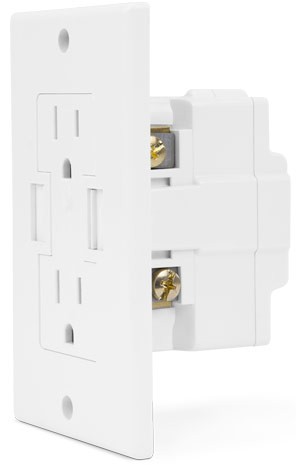
| At a Glance | |
|---|---|
| Product | Newer Technology Power2U AC/USB Wall Outlet (NWTPWR2USB) |
| Summary | U.S. duplex wall outlet with built-in two port 10W USB charger |
| Pros | • Cleans up some desk clutter • Can use chargers and built-in ports at same time |
| Cons | • You still have cable clutter • Charging can be slower than with device charger • Some USB cables don’t fit well • Installation can be tricky • Line noise interferes with powerline networking |
When I saw the Power2U at one of the CES press events this past month, I thought "I gotta get me one of those". So when I asked the guys manning the Other World Computing table when it would be available and learned it was already shipping, I ordered one up when I got back to my hotel room.
After having lived with the Power2U for a week or so now, my initial ardor has cooled. While it can still be a handy way to minimize adapter clutter around the ol’ home mobile device charging desk, it may not eliminate all of your chargers, or all your clutter, either.
Installation
Having lived in my share of old apartments and homes, I’ve replaced more than a few wall outlets. But even with that experience under my belt, getting the Power2U into its wall box was still a challenge. The installation instruction sheet contains the following helpful caution:
Do NOT install the Newer Technology Power2U wall outlet into an electrical box that is smaller than 16 cubic inches. If your electrical box contains more than 4 wires (not including ground wires), verify that it’s capacity is large enough to accomodate this device before proceeding.
Although I didn’t measure my wall box to check whether it met the 16 cubic inch criteria, the single-gang new-construction plastic box did contain only four wires (plus ground), so I pressed ahead with the installation. I shut off power, disconnected the old outlet and then hoped that the Power2U would allow me to just push in stripped wires like many outlets now allow.
Unfortunately, it doesn’t, but that’s with good reason. A glance at the drawing below shows that the Power2U on the left is more than twice as deep as a regular duplex outlet. So inserting wires directly into the back of the Power2U would probably not leave enough room to cram five wires in behind it.
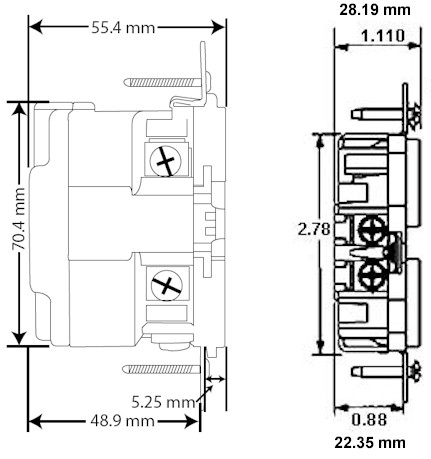
Figure 1: Power2U and normal duplex outlet compared
The Power2U’s spec drawing coyly omits the product’s overall width. But I’ll tell you, it’s wide enough that I had to carefully route the wires so that they passed over the top and bottom surface of the Power2U. I think the product’s designers realized this, because the Power2U’s terminals use a clamping design that forces you to route the wires as shown in Figure 2.
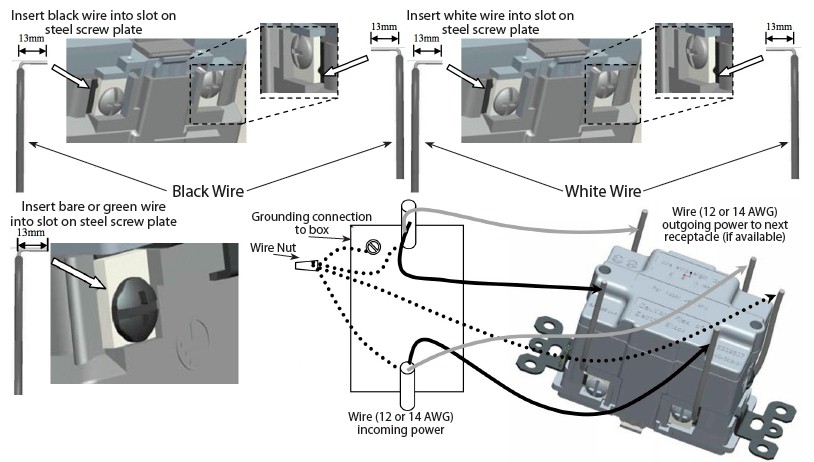
Figure 2: Power2U connection diagram
In Use
One I got the Power2U crammed into the outlet box, I gathered up all our USB-chargeable devices and plugged them into the Power2U, one at a time. I didn’t want to skew the results by loading the Power2U beyond its 10W limit. (The Power2U product page notes "To maintain factory-stated charging duration when charging two iPads or a combination of iPad and iPhone simultaneously, we recommend charging the iPad via the factory wall adapter".)
Table 1 shows that everything I tried worked, except for the ASUS Transformers. I had already run into this problem, however, when I tried to charge a Transformer with an Apple iPad/iPod charger.
| Device | Worked? | Comment |
|---|---|---|
| iPad (original) | Y | Charged more slowly than factory charger |
| ASUS Transformer | N | No charge indication |
| ASUS Transformer Prime | N | No charge indication |
| Kindle Fire | Y | |
| Kindle Touch | Y | |
| Kindle ($79 model) | Y | |
| iPod Touch (3 & 4 Gen) | Y | |
| LG Cellphones | Y |
Table 1: Device test summary
Even though both the Apple iPad/iPod charger and the ASUS Transformer charger are rated at 5V 2A (10W), there is something special in the ASUS charger that the Transformer needs. After some research, I found that USB device charging is actually pretty complicated and there is an entire USB spec for it.
The short story is that devices that follow the spec can find out how much charging current is available by detecting specific voltages on the USB port data (D+ and D-) lines. But the Transformers don’t follow the spec in that they need a charging source with a voltage of at least 11V @ 1A to work, according to this xda-developers forum thread.
Looking more closely at the tiny information printed on the ASUS charger reveals that it is rated 5-15V, 2-1.2 A. So it’s no wonder that the Power2U doesn’t charge the ASUS tablets!
Even with devices that the Power2U can charge, there are other design features that may limit its usefulness. The gallery below shows cable/charger interference problems I found with the Apple and ASUS chargers. It also shows how the sliding port covers don’t allow enough room for USB cables with wide bodies to fully seat. This can cause the connectors to become unplugged during charging if you’re not careful.
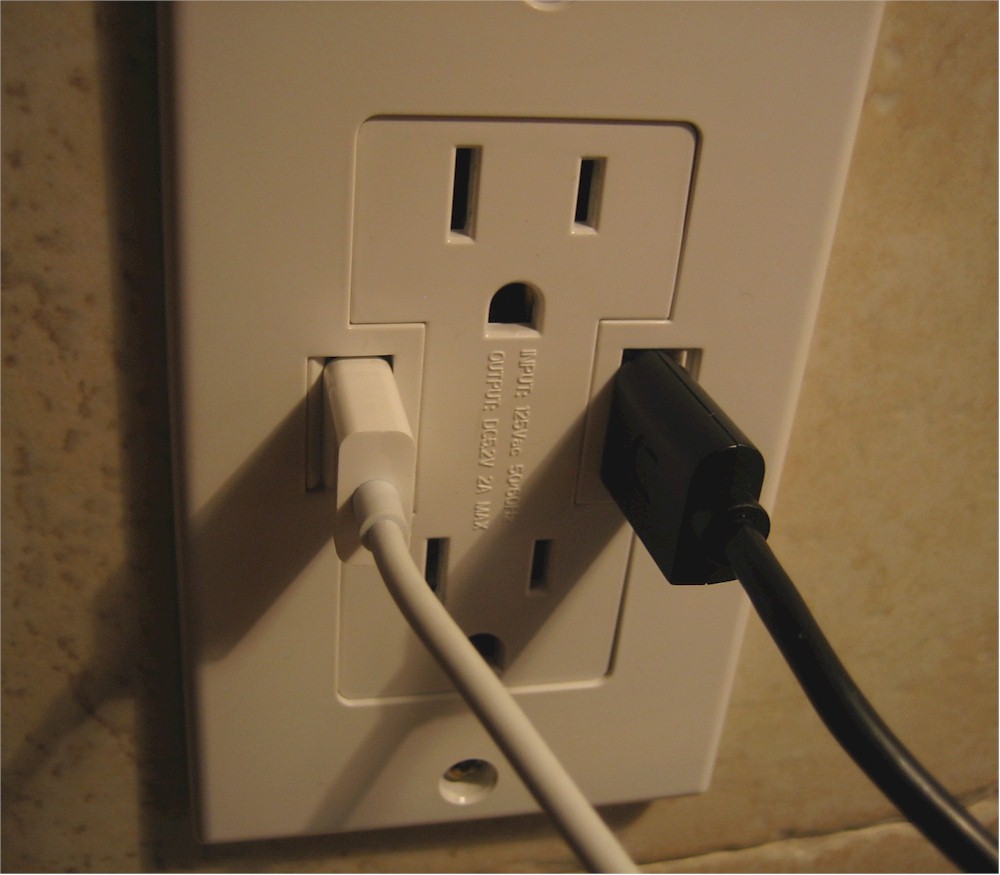
The sliding port cover lets the narrower Apple USB cable fully seat. But the ASUS cable, which has a wider body, cannot plug all the way in.
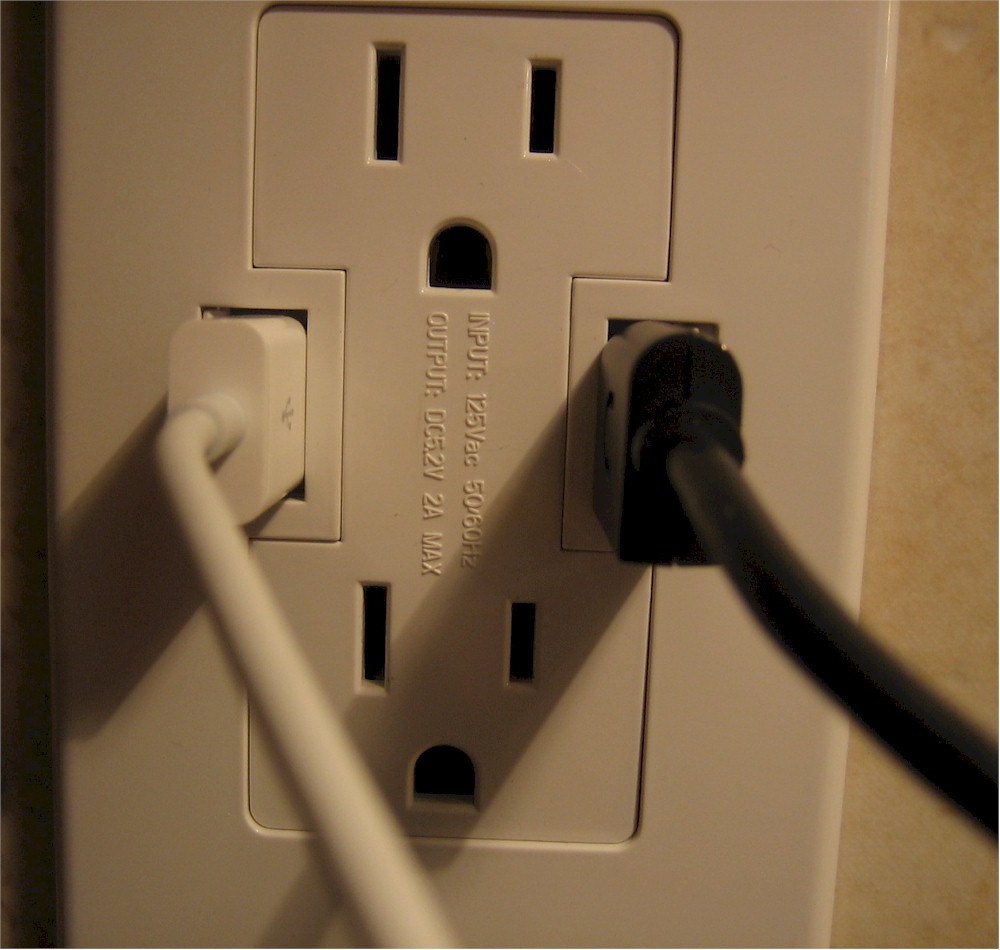
Another angle so that you can see the Apple cable fits on both sides. Note the left side of the ASUS cable is stopped by the outlet cover.
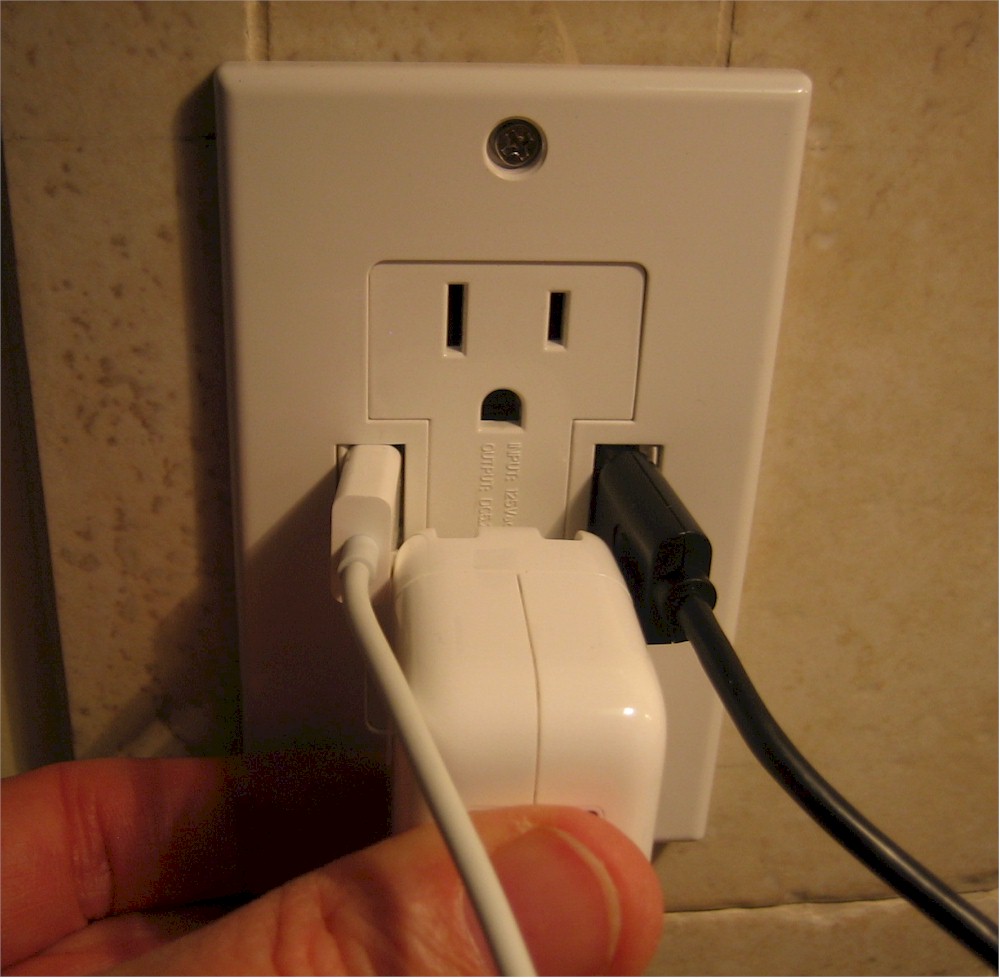
The Apple iPad/iPod charger is too wide to coexist with two USB cables, when plugged into the bottom outlet.
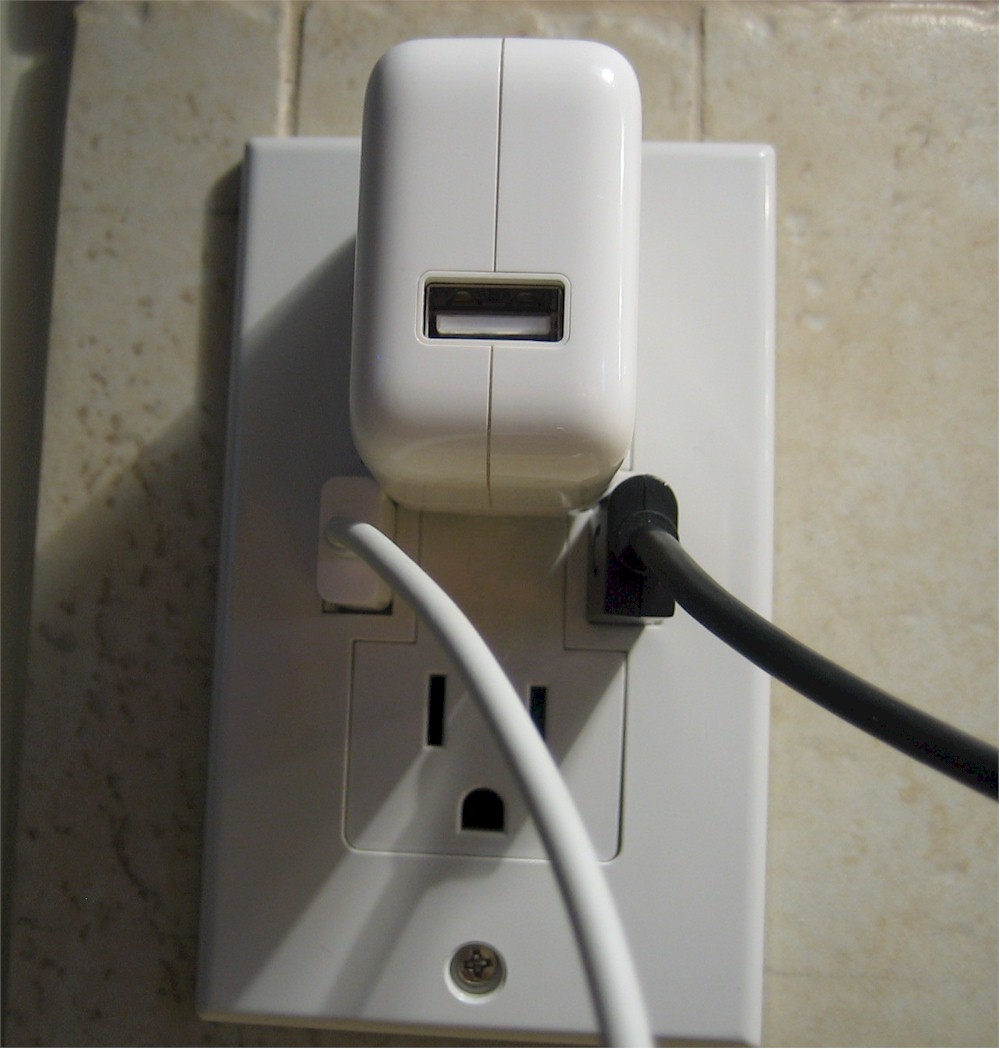
Moving the charger to the top outlet barely misses the two USB cables.
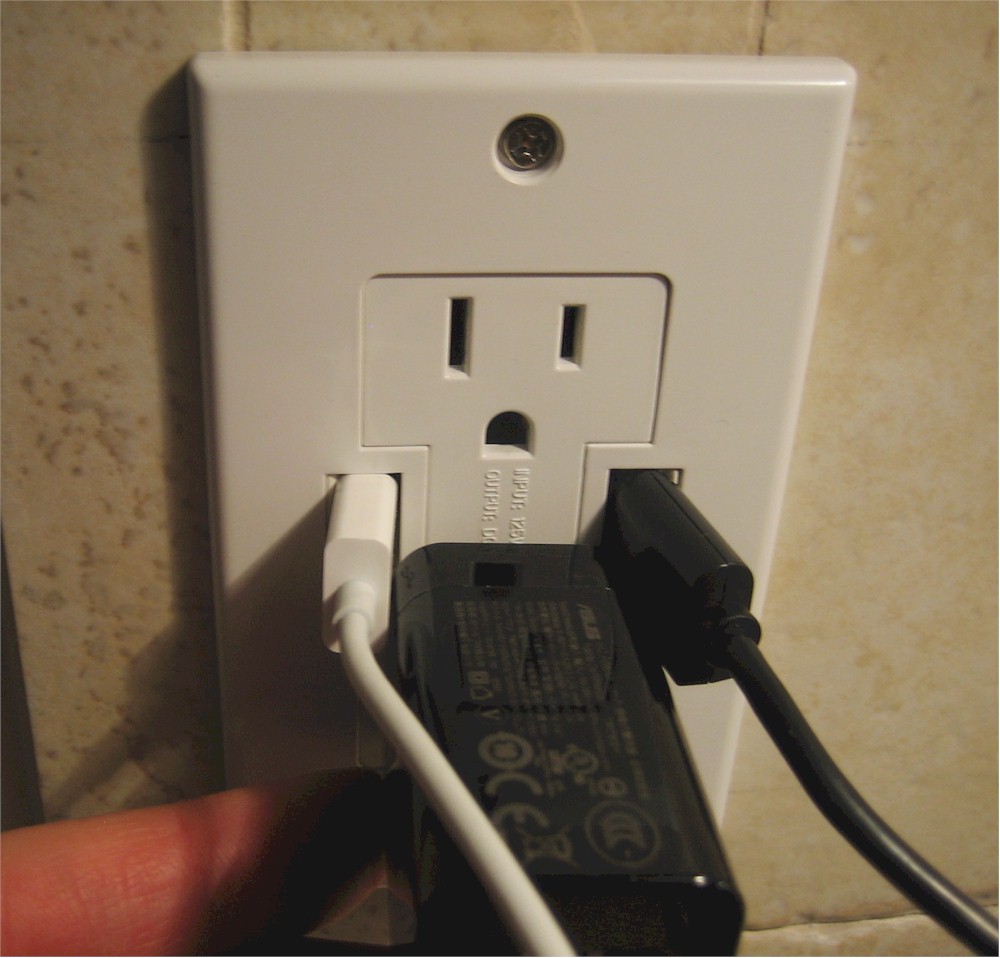
The ASUS charger also doesn’t fit.
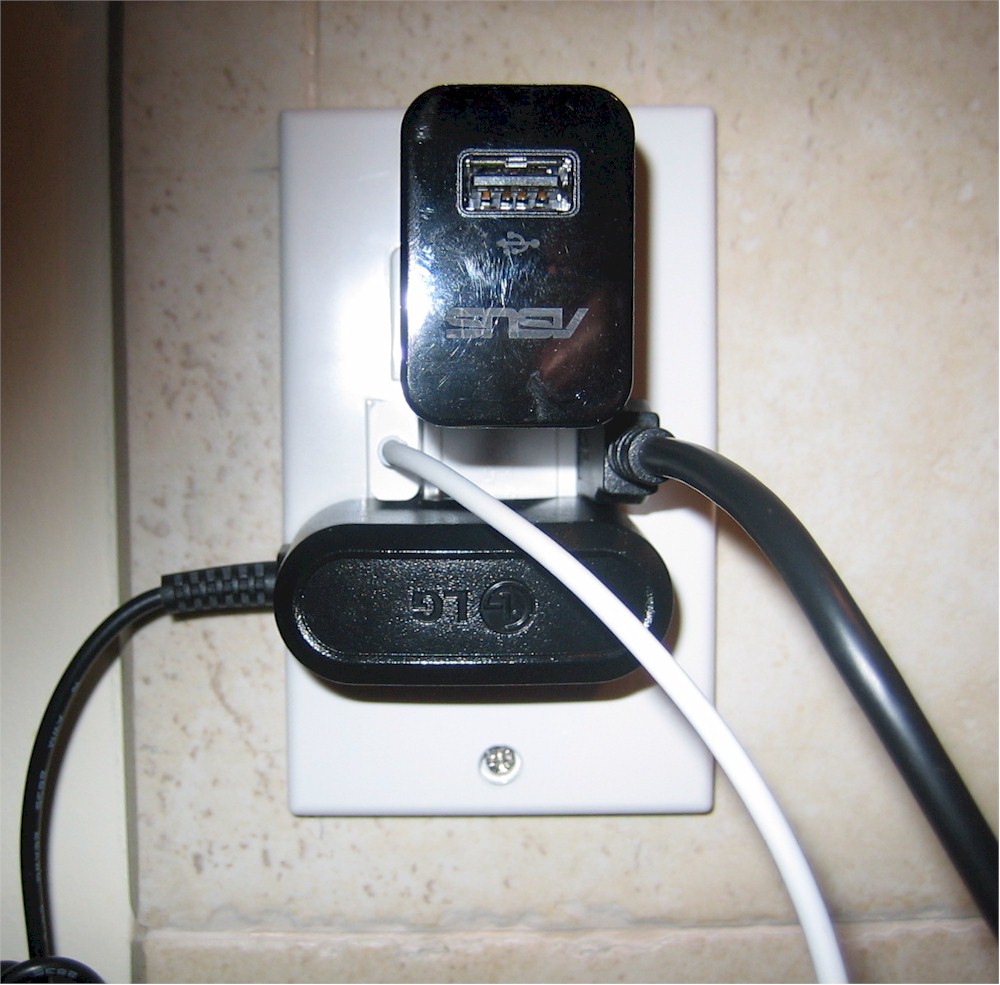
If you have the right chargers and cables, you can charge four devices at once.
I found that our version 1 iPad charged more slowly using the Power2U than with the factory charger. In one case starting with a 5% charge, the iPad was up to only 84% after three hours on the Power2U. With the factory charger, the iPad would have been fully charged in that time.
If you have the right combination of chargers and cables, Figure 3 shows you can charge up to four devices.

Figure 3: Four devices at once
By the way, I wasn’t really being sloppy by not installing the screw caps that come with the Power2U. It turns out that the screws that hold the cover plate on (highlighted in yellow in Figure 4) extend beyond the outlet box. Since my tile installer didn’t leave a wide gap around the wall box, I couldn’t fully seat the faceplate screws, which is required to install the screw caps.
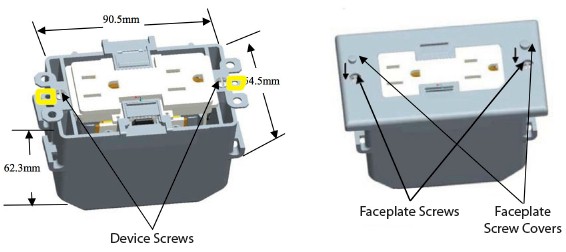
Figure 4: Faceplace screw detail
Updated 2/1/2012
While testing some powerline networking adapters, I found one more negative for the Power2U. Its USB charger generates enough powerline noise to reduce throughput of a 200 Mbps HomePlug AV adapter by around 50%. Unlike wall-wart chargers, you just can’t uplug this one!
Closing Thoughts
Given that the ASUS Transformers really are not USB-chargeable devices, I really can’t hold the Power2U’s failure to charge the Transformers against it. But the slower charge time for the iPad—with other built-in charger load—has us using its factory charger instead of the Power2U.
The other downer is that you still need all the proper cables for your devices stashed close by the Power2U. So the potential for counter clutter is still there. And if your devices came with charger with a captive cable, you’ll need to hunt down a cable.
If $40 still seems worth it and you are up to the installation challenge, you might try one and see if it works. For me, the "convenience" of digging out only the proper cable vs. a charger and cable doesn’t seem worth it.
Ms. SmallNetBuilder seems to agree. Since the Power2U went in, even after a demonstration of its wonders, she continues to charge her devices (iPod Touch, iPad and cellphone) the old-fashioned way.
